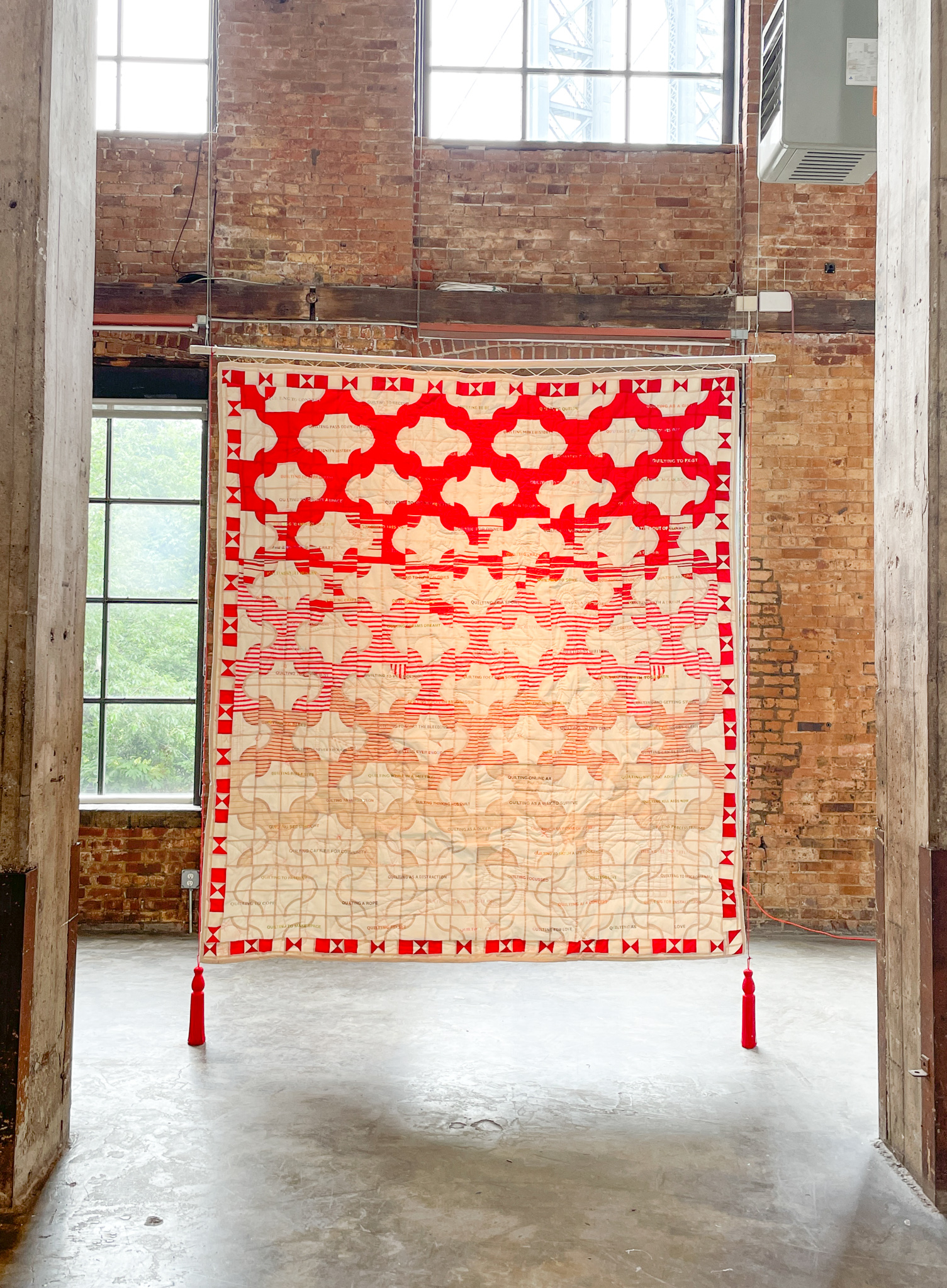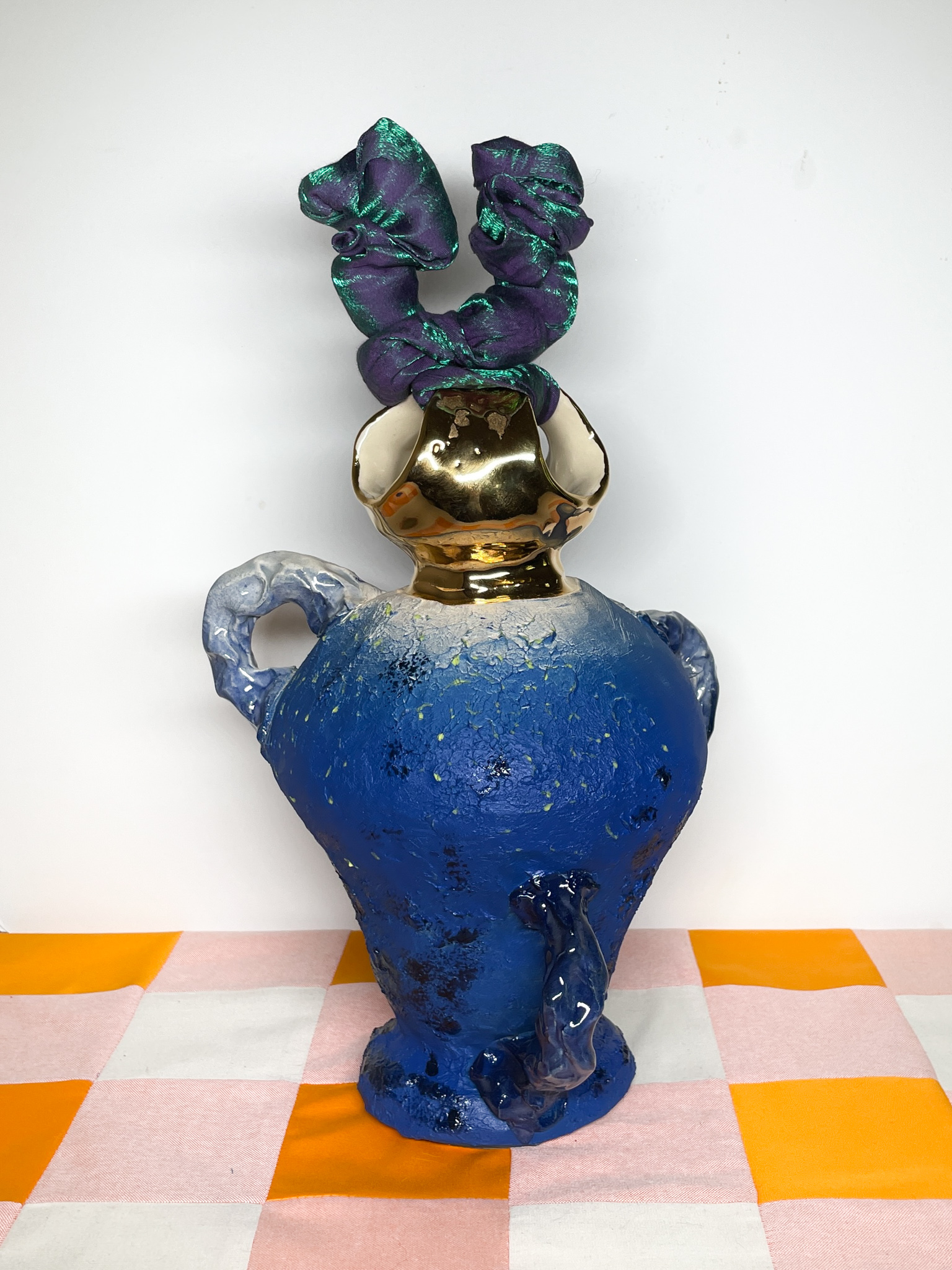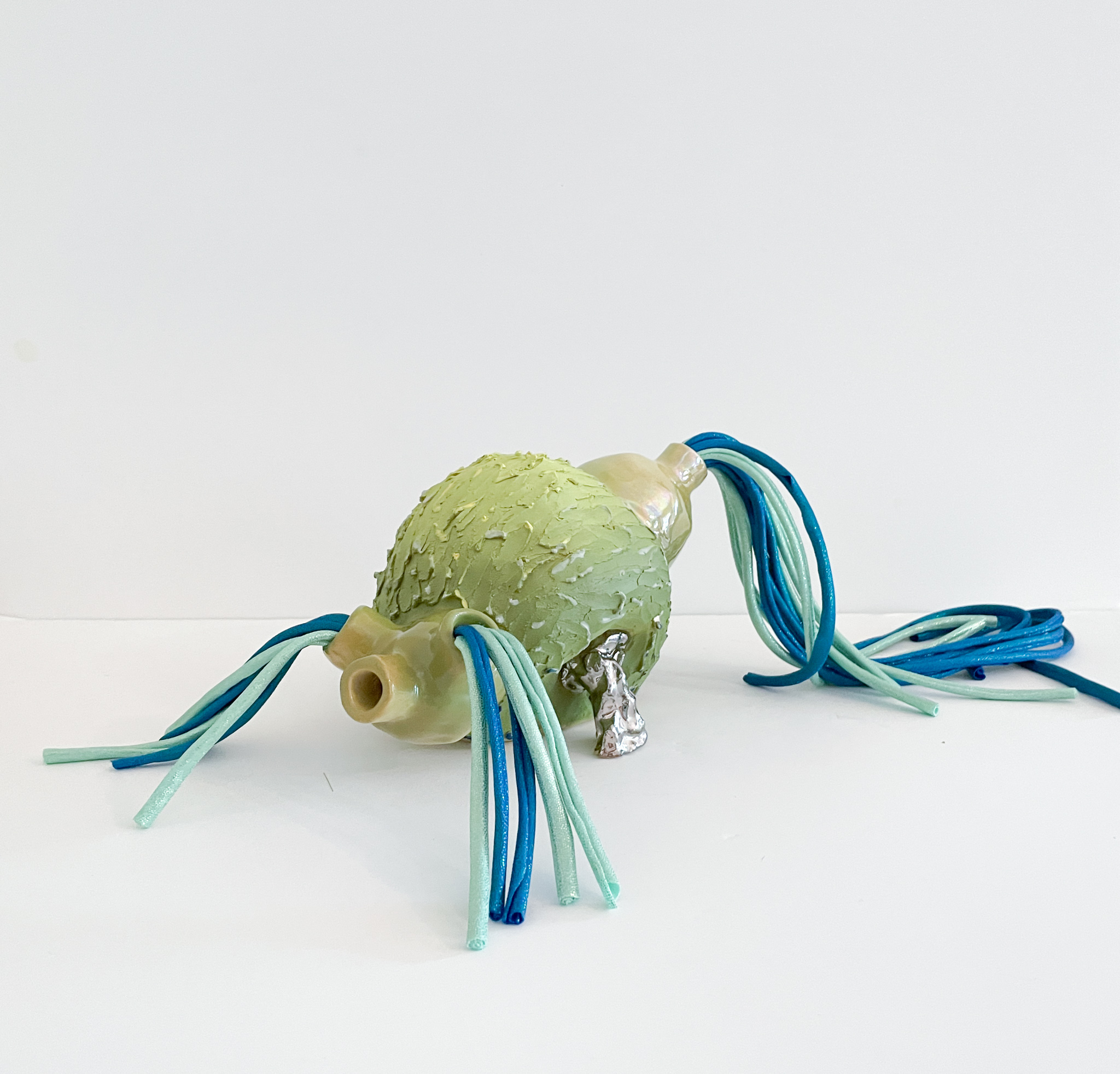Ak Jansen’s visual language is rooted within the abundant in-between spaces that queer people and queer art often finds itself. His sculptural and textile works meet at the shimmery intersection of color, form, community, and a reverence for glitter. We spoke with the Brooklyn based artist about his collection of work being shown in An Unofficial Gathering at Smack Mellon, the origins of his maximalist-aesthetic impulses, and what it means to make queer sculpture.
![]()
The Commons (detail), 2021,
ceramic, glaze, underglaze, 18k white/yellow gold, mother of pearl, fiber, and wood, 8.5 x 16 feet

The Commons (detail), 2021,
ceramic, glaze, underglaze, 18k white/yellow gold, mother of pearl, fiber, and wood, 8.5 x 16 feet
Do you have a Rose & Thorn for this week?
Well, I actually think one of the roses this week or for the last few weeks, is seeing this body of work come together. My thought process is so long and it's in my body for such a long time, not only in my mind, and then it's in language and words, but when it gets actualized it’s really scary and really beautiful. At the same time, this is my thorn, and also that I haven't seen anyone, I haven't had any sleep. All I’ve done is work–I’m grateful for it.
You mentioned that you’ve been having studio-dreams.
I wake up, I barely have breakfast, I work, then I work more, then I eat something if I think about it, then I’ll go to bed. I’ll dream about it all night and in the morning I can’t tell if my dream was real or not!
Do you believe that some distance or time away from the studio is important for your work overall?
Well, I wouldn't think about it like that, the thought process is as much doing as the physical production of the work. I underestimate, on a daily basis, how important it is to reflect. My husband is a dramaturg and works in the theater, and I don’t know if it’s related at all, but we always talk about art and work. It's fabulous, but I don't consider that not working. I could use a physical difference in my life, sitting hunchbacked in front of the sewing machine with a very dim light and glasses that aren’t the right prescription isn’t great; my body could use a break. So yeah, I agree in that sense.
Do you feel like the physical space where you're creating the work influences the outcome?
During the pandemic everyone had a huge shift. I started grad school before the pandemic–I got deep into my practice and studio at school–but then everything changed and moved. I mean, this is a very local move, right? It went from campus to my home, and it went from my home to the ceramic studio where I'm a member, and I think the work just kept developing, but I don't think it changed in either concept or visuality. However, I did make a body of work that are all masks, and that is, of course, directly related to the shift in space, be it that I didn’t have access to a ceramic studio for a while. I like that question.
![]()
Installation view, An Unofficial Gathering, 2021,
Smack Mellon, Brooklyn, NY
There’s something really New York about the work.
Why do you say that?
Well, when I think of New York, I think of a lot of people basically living on top of one another, whether you like it or not, and I think that your work is about community in a way that is really urgent, which is also something that reminds me of New York.
I think that's kind of beautiful that you say that, and I think it’s simultaneously beautiful and sad. There is very little space and lots of people in New York. I think it often results in people not acknowledging each other when they’re on their way from point A to point B. It’s almost impossible to nod at everyone and give everyone the attention they deserve.
Both of these bodies of work want to be with people intentionally in a community. The sculptures sit together on a gingham plaid and they want you to spend time with them. The quilt hangs in space and is asking for your undivided attention. People can, of course, spend as much or little time with the work they want, but I think the work wants to be acknowledged and the work wants to acknowledge the viewer.
Both of these bodies of work want to be with people intentionally in a community. The sculptures sit together on a gingham plaid and they want you to spend time with them. The quilt hangs in space and is asking for your undivided attention. People can, of course, spend as much or little time with the work they want, but I think the work wants to be acknowledged and the work wants to acknowledge the viewer.
![]()
The Commons (detail), 2021
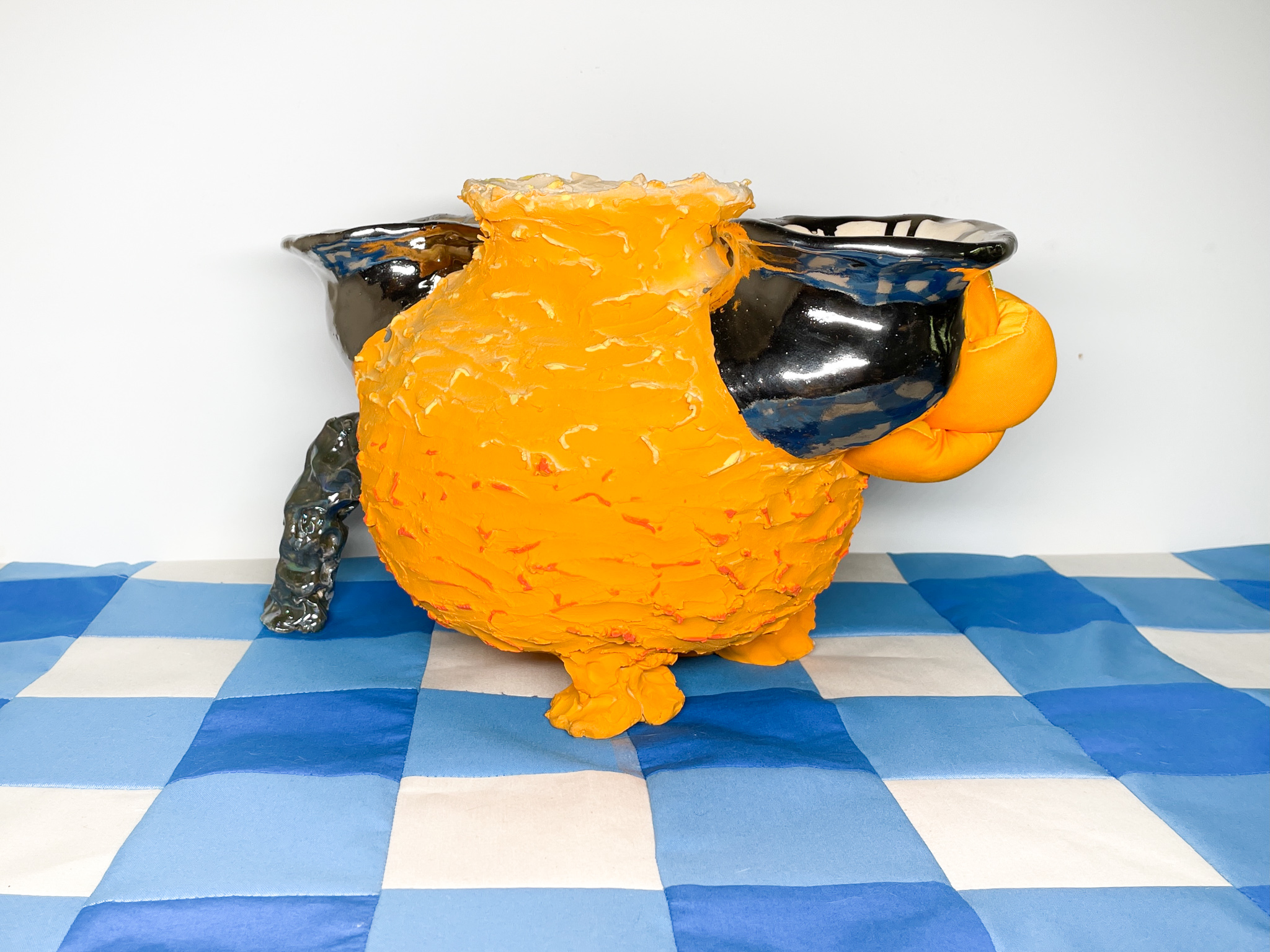
The Commons (detail), 2021
Is this intentional togetherness a large part of your work?
So let's start with the quilt. The quilt has a particular pattern, which is called the Drunkard's Path, it has a color combination which is historically known as Turkey red and white. There is the manifesto on the front, and then there is the drawing on the back. That piece needs people to slow the fuck down and stand in front of it–or behind it–and look at it. The drawings are hand quilted, which make every stitch look different. There’s a lot to look at and, I think, people need to take the time and be intentional about it. And if you don't, that's okay too, you're just not going to really see the quilt that I made.
The text is a manifesto, one phrase says “quilting while in AA.” This is sort of a “coming out” for me as an addict. The Drunkard’s Path is a beautiful pattern and the way I chose to put the pieces together kind of looks like two butt plugs. But also, I think the name is beautiful. And it just ties into my life, which is a drunkard's path, and I'm still on it, I just am not drinking or using.
The text is a manifesto, one phrase says “quilting while in AA.” This is sort of a “coming out” for me as an addict. The Drunkard’s Path is a beautiful pattern and the way I chose to put the pieces together kind of looks like two butt plugs. But also, I think the name is beautiful. And it just ties into my life, which is a drunkard's path, and I'm still on it, I just am not drinking or using.
![]()
Quilting the Manifesto, 2021,
cotton, vinyl, cotton thread, textile marker, tassels, 112 x 96 inches
“...togetherness is important in all my work. It’s about being together with intention. Be it looking at each other, sculpture to human and human to sculpture, or conversing about a certain topic...”
The red is called Turkey red, a 19th century classic. Now, the fabrics that I use are probably not the specific turkey red as historically known, but it's called Turkey red because in the early days, Americans didn't know how to dye a color that was that red, so they basically bought red fabrics from Turkey.
So it starts at the top with bright red and white, and then the red sort of fades out. It's definitely something related to fading out of consciousness, I think quilting has been fading out for years. It was so important for me to do it all by hand–it's machine patched–but then all the quilting is done by hand.
But I’ve totally dodged your question: togetherness is important in all my work. It’s about being together with intention. Be it looking at each other, sculpture to human and human to sculpture, or conversing about a certain topic, etc., etc... The quilt is hand quilted with help from others, and the conversations that took place were surprising and beautiful. It has absolutely solidified the urge to be together and feel togetherness.
![]()
Quilting the Manifesto (detail), 2021
Can you talk about those drawings?
Sure, I’ll first say that the technical term quilting refers to a technique whereby someone sews through three layers. There is a front, which is the Drunkard's Path, a bedding, which is the inside of the quilt, and then the back. The back of this quilt has a collection of drawings on it.
You can do this by hand, quilting and sewing through these three different layers, but nowadays people do it with a machine which is called a quilting arm, which is basically a hybrid between a sewing machine and an embroidery machine that you can ‘drive’ across your quilt.
I wanted the quilting to be done by hand, which I think is really important because of the craft involved with quilting; it's done within a community and it's passed down from generation to generation and it's just such a meditative and contemplative and slowed down process. It's something that is very intentional because if you're not there doing it with intention, you're not going to be able to quilt.
You can do this by hand, quilting and sewing through these three different layers, but nowadays people do it with a machine which is called a quilting arm, which is basically a hybrid between a sewing machine and an embroidery machine that you can ‘drive’ across your quilt.
I wanted the quilting to be done by hand, which I think is really important because of the craft involved with quilting; it's done within a community and it's passed down from generation to generation and it's just such a meditative and contemplative and slowed down process. It's something that is very intentional because if you're not there doing it with intention, you're not going to be able to quilt.
![]()
Quilting the Manifesto, 2021,
cotton, vinyl, cotton thread, textile marker, tassels, 112 x 96 inches
“I wanted the quilting to be done by hand, which I think is really important because of the craft involved with quilting; it's done within a community and it's passed down from generation to generation and it's just such a meditative and contemplative and slowed down process.“
For the drawings, I sent an email out to some of my very dear queer friends and I asked them if they could help me make the illustration for the back of the quilt. People responded with drawings, and then I made this large illustration that is drawn on the back of the quilt in thread. All of these outlines are quilted, which results in seeing the stitching in the front, and on top of the pattern with the manifesto. The prompt was “what is queer culture for you?’ The people who helped me are my friends and they just drew pictures that represented queer culture for them. There are a lot of flowers and super sexualized things, like glory holes and gags, jockstraps and cockrings, and there’s also poetic things, like a Poodle and a bottle of cologne or even a portrait of certain pets.
This project has a surprising start. I was in this critical thinking class, and we had to write a manifesto. The first sketch of the manifesto happened real quick. My then professor, Jasmine Wahi, who is an amazing human being, professor, and curator, knew what I was making before I did, she said to me, “don't you think this needs to be a quilt?”
This piece wasn’t supposed to be in the show, but Rachel Vera Steinberg, the curator at Smack Mellon, another amazing person, said we should do it–I agreed! My community helped me finish it.
![]()
Quilting the Manifesto (detail), 2021
Can you give us a rundown of the show?
It's called “An Unofficial Gathering,” and it's the work of fourteen people, which represents two years of MFA students at Brooklyn College ‘20/’21. The work is wildly diverse, but there are themes that are sort of overlapping, one of which being community. I think this might have to do with the pandemic and the community that was suddenly eliminated out of everyone's lives. It’s a Thesis show.
Last time we spoke, you were talking about the verticality of communities, and how you wanted to have the viewers sit down, as part of the quilt, like a picnic. How have these ideas ended up in your works for this show?
I tried very hard to get that concept across, and then the feedback I was getting was just like, you know, “I don't want to get on the floor when it's in a gallery,” or “I don't want to take my shoes off to go onto a quilt,” and I was thought “whatever, I'll figure it out.” But instead, I came up with something that is way more poetic. The installation is sixteen by eight feet, and there's different colored gingham throughout.
Gingham plaids remind me of picnics, about bbq’s, and about coming together. Now what happened is that people are not actually going to sit with them, although, please, be my guest to take a seat on the floor next to the installation, but they're going to be the participants in seeing all the sculptures sit together and be together on the picnic blanket on the–almost–ground, which is to say that it’s slightly elevated from the floor.
I want to do a show where I wrap a whole freaking gallery in gingham, and so as soon as the viewer steps into the space they are participants of the work. I’m curious to see how the gingham gets dirty because of the New York street that is hanging on everyone's shoes, I’m curious to see what that’s going to look like.
Gingham plaids remind me of picnics, about bbq’s, and about coming together. Now what happened is that people are not actually going to sit with them, although, please, be my guest to take a seat on the floor next to the installation, but they're going to be the participants in seeing all the sculptures sit together and be together on the picnic blanket on the–almost–ground, which is to say that it’s slightly elevated from the floor.
I want to do a show where I wrap a whole freaking gallery in gingham, and so as soon as the viewer steps into the space they are participants of the work. I’m curious to see how the gingham gets dirty because of the New York street that is hanging on everyone's shoes, I’m curious to see what that’s going to look like.
![]()
The Commons (detail), 2021

The Commons (detail), 2021
What is that drawing on the quilt that looks like lesions?
I have a friend who I used to live with and work for, Izhar Patkin. He is an Israeli artist who lives in the East Village; I'm staging the work at his house before the show. This painting, called Unveiling of a Modern Chastity, made in 1981, predates the official term “AIDS.” Jonathan Katz, who co-curated the show Art Aids America at the Tacoma Art Museum, which later traveled to the Bronx Museum, said that it might be the first painting related to the AIDS crisis.
Why do you want viewers to look down at the works, rather than meet them at eye level?
One, the presentation of the eye level, white box gallery style, might work on a pedestal, but doesn't always work for me–it can be unbelievably boring.
Two, this ties back into the idea of participation as a viewer, where you're walking into the space and you're basically running into this big installation where the works are lower to the floor; if you really want to see every individual being who’s at the picnic then you’ll have to bend your knees, go lower to the floor, and look at it closely.
If you don't, then that's fine too. But if you are really invested in it, that's what you'll do. It's an invitation to think about something other than you and your height, which ties into the idea of in-betweenness, which is basically describing Queerness.
Two, this ties back into the idea of participation as a viewer, where you're walking into the space and you're basically running into this big installation where the works are lower to the floor; if you really want to see every individual being who’s at the picnic then you’ll have to bend your knees, go lower to the floor, and look at it closely.
If you don't, then that's fine too. But if you are really invested in it, that's what you'll do. It's an invitation to think about something other than you and your height, which ties into the idea of in-betweenness, which is basically describing Queerness.
![]()
Installation view, An Unofficial Gathering, 2021,
Smack Mellon, Brooklyn, NY

Installation view, An Unofficial Gathering, 2021,
Smack Mellon, Brooklyn, NY
I have a question related to the concept of the picnic and if you feel that the distinction between public and private spaces is of importance here?
Privacy doesn’t really exist anymore, even though there is the idea of privacy. When you walk into the door of your apartment, we bring everyone in with this thing [gestures to iPhone].
There is the idea of a public space where you come with your picnic blanket, and you have your picnic, but then if you are in that public space on your picnic blanket, and, I don't know, someone walks into that public space and onto your picnic blanket, there will be a conversation about that because that is yours.
It’s about the idea of ownership that goes along with privacy. In an ideal world, this doesn't exist, this whole “this is mine and that is yours” thing. But this might be utopian thinking.
There is the idea of a public space where you come with your picnic blanket, and you have your picnic, but then if you are in that public space on your picnic blanket, and, I don't know, someone walks into that public space and onto your picnic blanket, there will be a conversation about that because that is yours.
It’s about the idea of ownership that goes along with privacy. In an ideal world, this doesn't exist, this whole “this is mine and that is yours” thing. But this might be utopian thinking.
![]()
The Commons (detail), 2021
Would you say that the sculptures are queer coded? They have this presence, they attempt to be alive in some way. I’m wondering if the concept of having people sit with the sculpture relates to this idea of being in a community with people who aren't necessarily like you, but are perhaps queer?
Yes to all the above. The sculptures are not only ceramics or fabric, they are both; they are something in between. They are not all vessels, but some of them are, and some look like they can walk away. They do have human or animal qualities to them. I do believe that the “in between” is what queerness is.
They do look like more representations of vessels than actual vessels.
It’s funny, because in the original sketches I made for them, they are all proper vessels. I thought that this project would have very simple shapes. I was interested in the vessel as one of the oldest known human made forms. The concept and visuals of the vessels has developed over the last few months and became what they became, which is to say that they are still vessels, and many other things and beings as well.
So they all began with the idea of a vessel, and went into whatever direction from there?
I think whenever someone makes something, and that particular person starts with an answer, like, “I'm making a vessel,” the work gets really flat. There’s no process possible there, so I think it's really important to always start with the question.
One of the questions that I was asking myself is, “what is queer sculpture?” Or “what is a sculpture with consciousness?” Or “what is a sculpture that is actually looking back at you while you are looking at it?”
I think that is one of the reasons why there are so many different ingredients to making the works–color, finish, form, size, hollowness, texture wise, etc.. And, yes, the idea of a vessel was always present, to me they didn’t have to become functional, recognizable vessels. Let it be something new.
One of the questions that I was asking myself is, “what is queer sculpture?” Or “what is a sculpture with consciousness?” Or “what is a sculpture that is actually looking back at you while you are looking at it?”
I think that is one of the reasons why there are so many different ingredients to making the works–color, finish, form, size, hollowness, texture wise, etc.. And, yes, the idea of a vessel was always present, to me they didn’t have to become functional, recognizable vessels. Let it be something new.
![]()
The Commons (detail), 2021
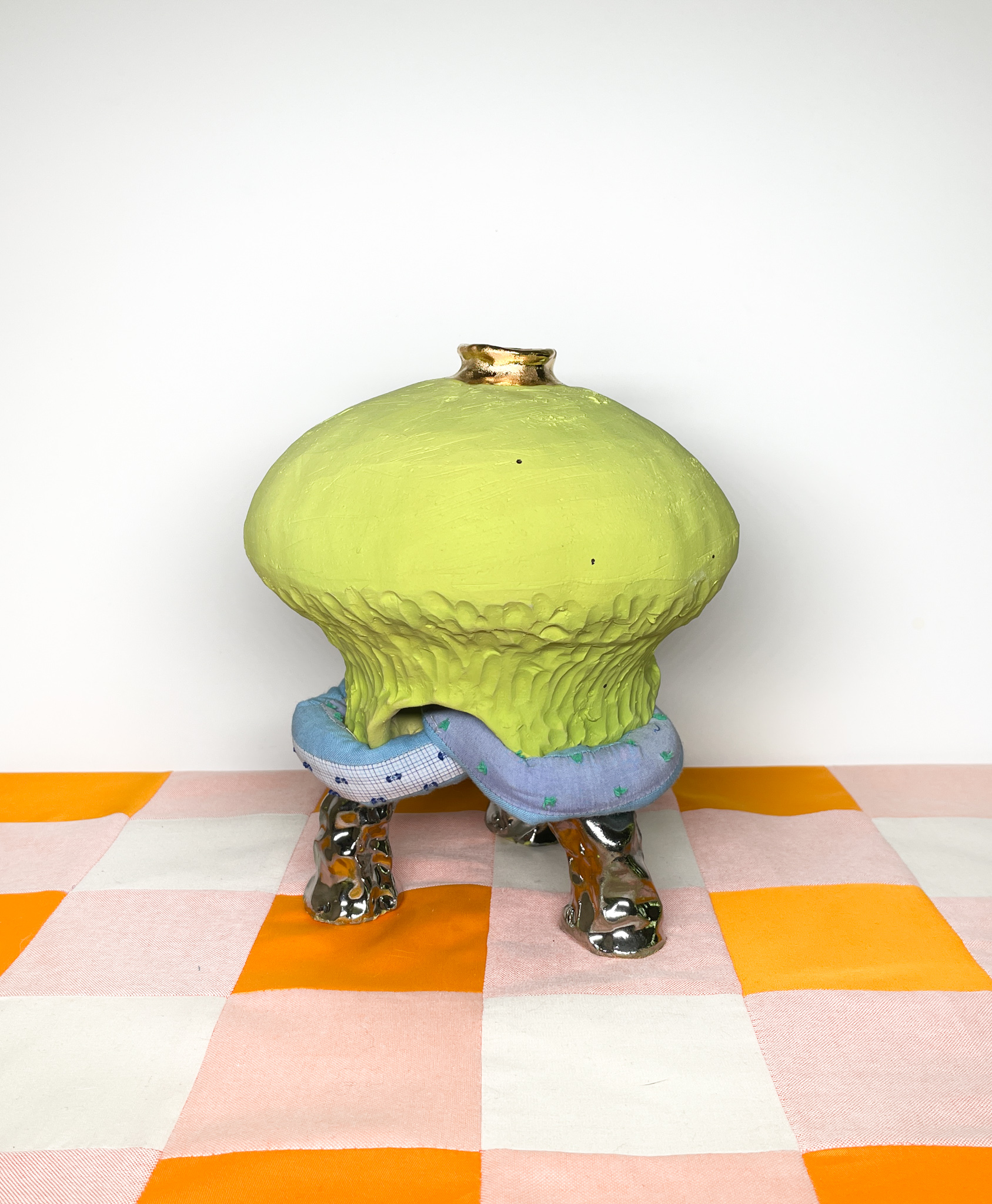
The Commons (detail), 2021
Something we talked about before was how your dutch background has influenced your aesthetic choices or sensibility. Can you talk about that?
I do have an undergrad degree in textile design, hence the affinity for textile and fabrics. Honestly, I kind of ran away from the Netherlands for many reasons. And one of them was because I just couldn't find my footing there. It was too small. The people were not like me, I didn't even like the language; I never felt home there. That’s a question I don’t really know how to answer.
“I do think that there is an idea of perfection in my mind that comes from having grown up in the Netherlands. I don't know, maybe that’s Dutch heritage combined with New York ambition that wants me to make things that are finished and complete?”
Actually, the one thing that I can say about the Netherlands is that my husband, Sunder, always says that Dutch people are very competent. If you go to the Netherlands, and you drive on the road, all the trees are the same size, and they are all 10 feet apart, they are all the same shape and flower at the exact same time.
Dutch people are very rigid, and they are good at what they do, and they do it the best, which is not to say that that's me–remember, I ran away from there– but I do think that there is an idea of perfection in my mind that comes from having grown up in the Netherlands. I don't know, maybe that’s Dutch heritage combined with New York ambition that wants me to make things that are finished and complete?
![]()
The Commons (detail), 2021
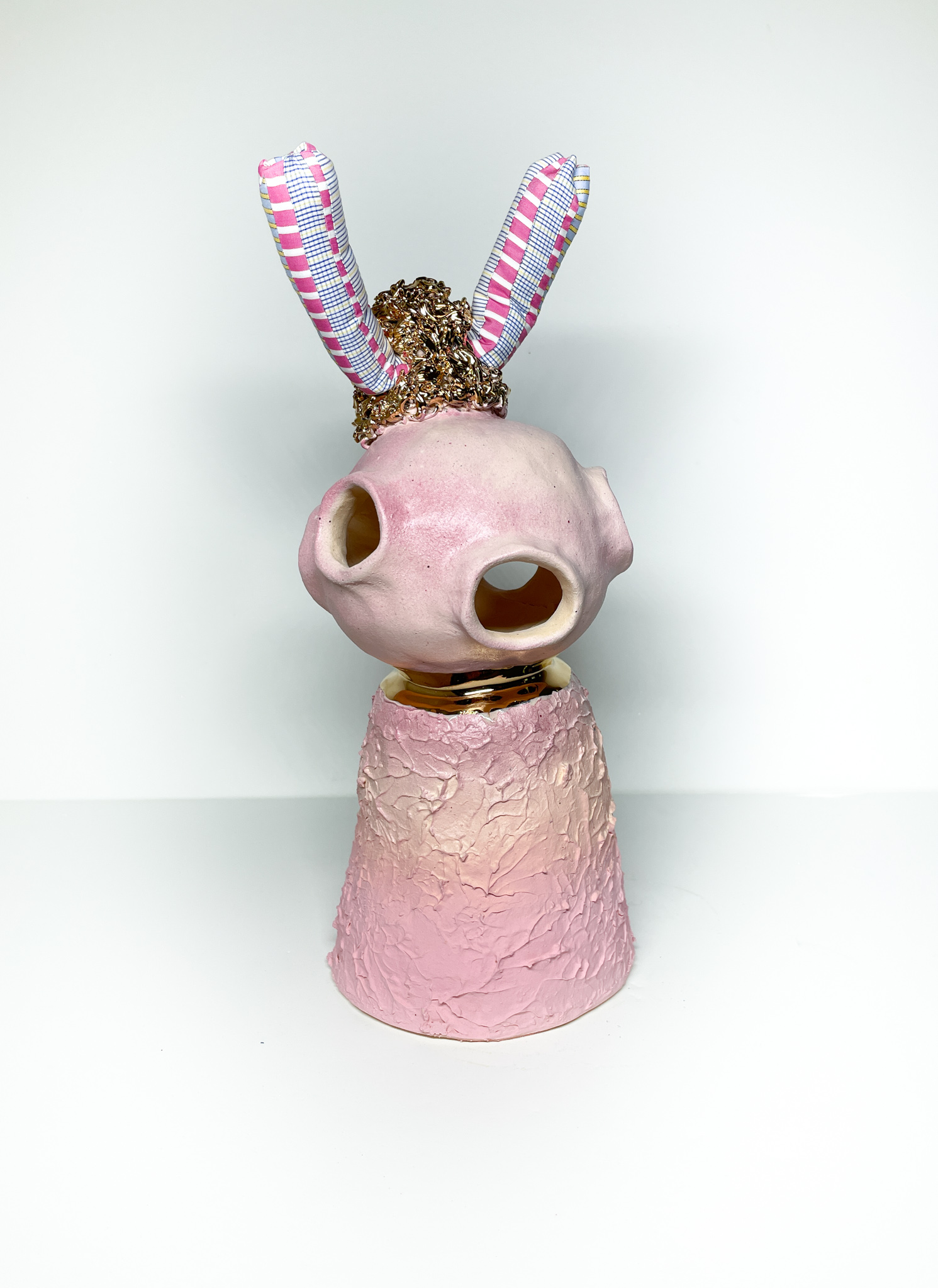
The Commons (detail), 2021
Even though the sculptures are very amorphous, and it feels like there is a level of meticulousness to them, the ways in which they're actually completed does feel like they've made their way through a strong process, which reflects that sensibility.
That really actually touches me because I feel seen. I told Jack yesterday that, while I was packing them to be moved from my house, I picked one up and I just started bawling. Actually bawling. I thought “What the hell is this!” Some of them are rough, and the shapes are undetermined, and yet I think I agree. I love the fullness of imperfect perfection.
I can see the care that went into them.
Let's say you're writing something, and you think of the thing you're writing as a human or as a being, the writing is going to be different than if you think of it as a pen and paper. Because I'm asking these questions, and I do consider them beings or having a consciousness or at least a subjectivity, the work is made differently. That might be a reason why that is reflected there.
One thing I want to mention, which is kind of funny, is that I've always had an affinity for shiny and glitter and gold. In undergrad, there were many teachers that called me trashy, they would just call me out and say, “that's very trashy.” I have a dear dear friend, Yob, who now lives in London, and he said “if it ain't shine, it ain't mine.” And I say this to myself all the time. Even in the quilt, it's all cotton, but then the text is iridescent and mother of pearl and gold and glitter–it’s always there.
One thing I want to mention, which is kind of funny, is that I've always had an affinity for shiny and glitter and gold. In undergrad, there were many teachers that called me trashy, they would just call me out and say, “that's very trashy.” I have a dear dear friend, Yob, who now lives in London, and he said “if it ain't shine, it ain't mine.” And I say this to myself all the time. Even in the quilt, it's all cotton, but then the text is iridescent and mother of pearl and gold and glitter–it’s always there.
![]()
The Commons (detail), 2021
This seems like the opposite of the Dutch aesthetic!
If I say Dutch design and something comes to mind about what Dutch design is, that's basically how I started learning design. I studied at the Design Academy Eindhoven, and so that's basically how I've been educated. That was my introduction to visuals because I did not grow up going to museums and looking at art or talking about it, my parents had no idea and neither did I. I wonder if part of the maximalist aspect of my work is in direct opposition to Dutch design, which is also very gimmicky and kind of regional.
Whoops, did I just say that?
Whoops, did I just say that?
What’s next for you?
I kind of grew up a dreamer, I was never really present, because I was always in my own world– somewhere else. One, I'm not supposed to be alive because of many different reasons. Two, I'm not supposed to be in America, because I'm Dutch and had no ‘legal’ way of staying. Three, I'm not supposed to be in New York because I have no freaking money; I’m not supposed to be in a grad program, because I went to a ‘not so smart school’ in the Netherlands.
All of these things should have not even happened. But my dreams manifested them, and I see that as a pattern. I'm serious about this. I'm an artist in New York, and so I dream about big things. One day, the big things are what’s next for me, and I can add it to my ‘I’m not supposed to be’ list.
All of these things should have not even happened. But my dreams manifested them, and I see that as a pattern. I'm serious about this. I'm an artist in New York, and so I dream about big things. One day, the big things are what’s next for me, and I can add it to my ‘I’m not supposed to be’ list.
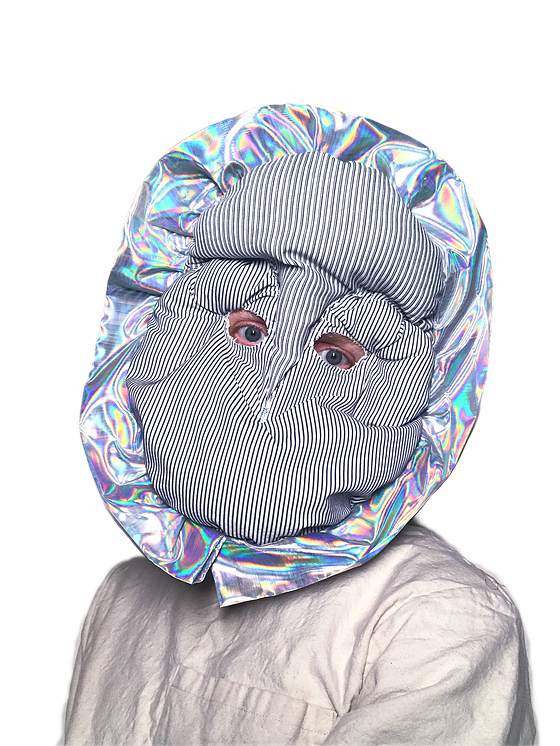
“I'm an artist in New York, and so I dream about big things. One day, the big things are what’s next for me, and I can add it to my ‘I’m not supposed to be’ list.”
One thing that is actually next is that this summer, Rashid Johnson is doing an installation for Creative Time at Astor Place, where he's basically building a public stage in a public space. There are several artists who were asked to activate the space for 10 hours. A friend, Charlotte Brathwaite, is one of the artists invited to activate the stage. She brought me on as a visual artist to design a space, so, on June 24th, come to Astor place!
An Unofficial Gathering
Smack Mellon, Brooklyn
June 5 – 13, 2021
Visit Ak Jansen’s artist page.
︎: @ak.jansen


